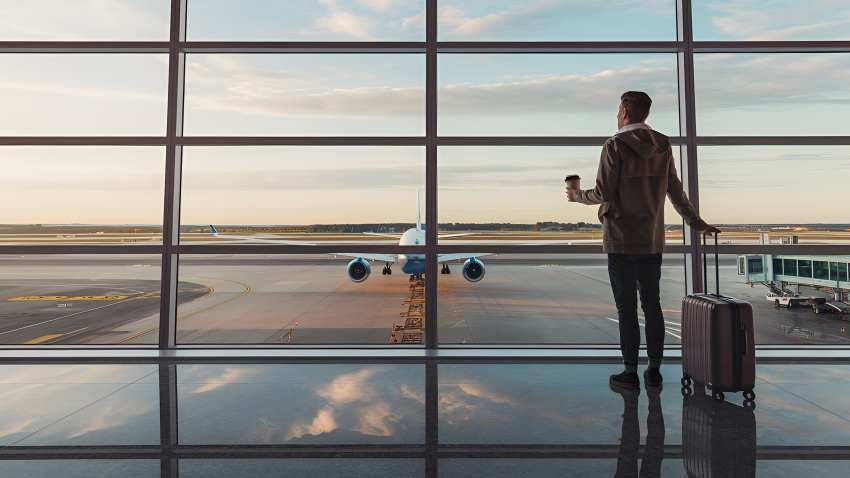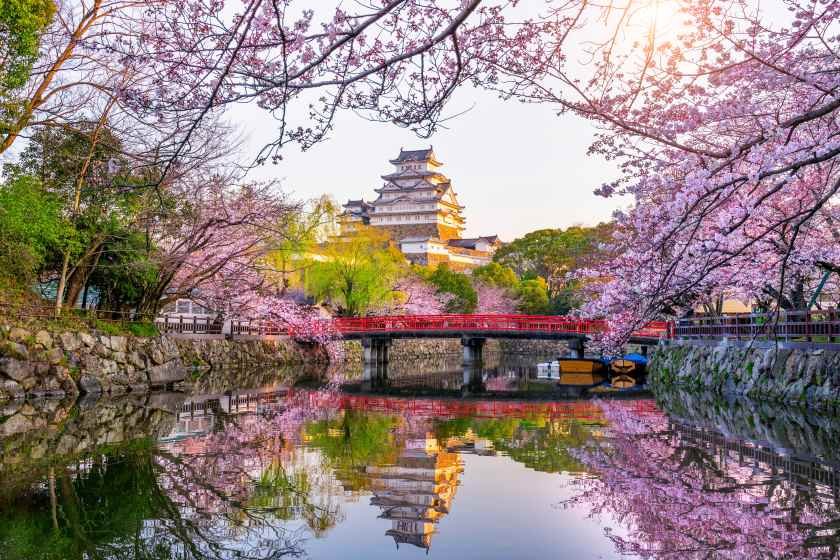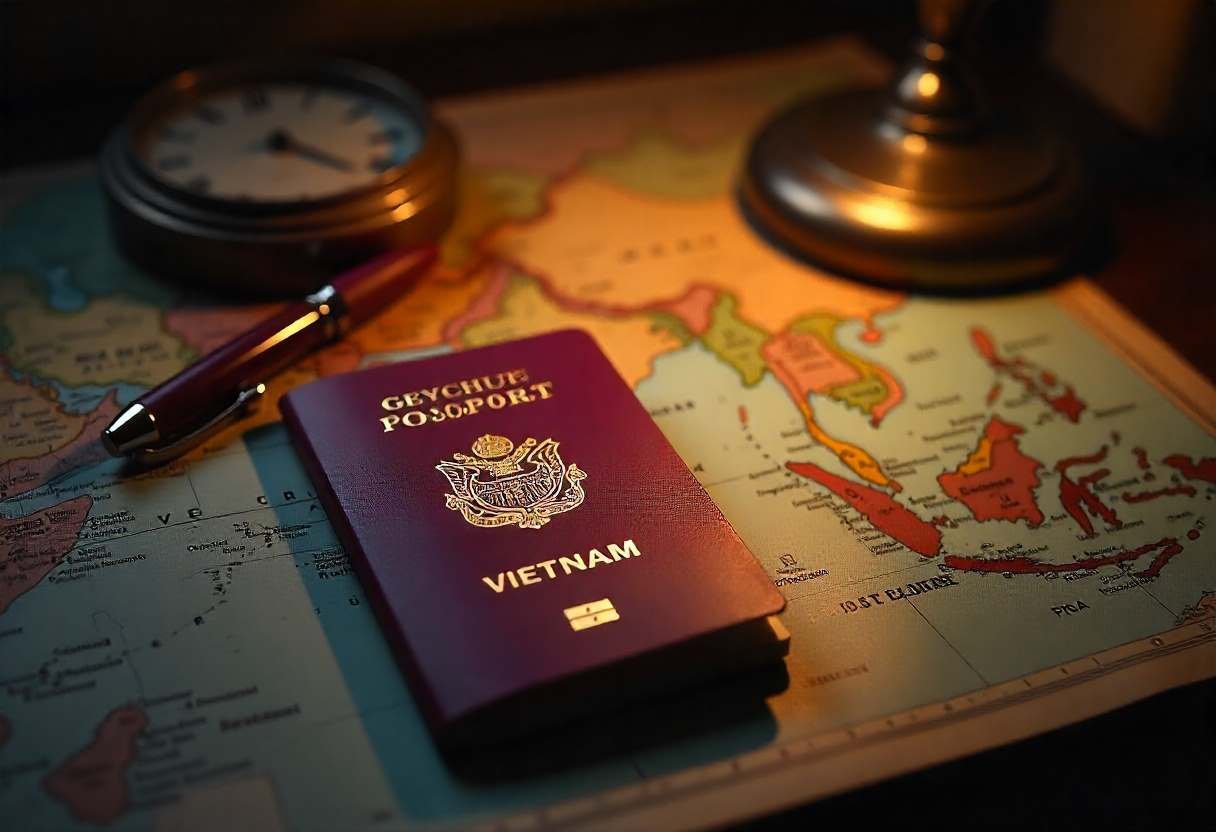Asia Travel Pulse
Changi Airport Reignites Asia’s Travel Circuit: Surging Q2 Traffic Links Singapore with Jakarta, Shanghai, Mumbai, Sydney, and Vienna

Wednesday, July 23, 2025
As the morning haze cleared from the runways of Singapore’s Changi Airport, the steady buzz of engines from Jakarta, Shanghai and Mumbai reverberated within the terminals. In Q2 2025 alone, 17.5 million people passed through, headed out or just returning hone —everyone with a different hope, a different destination, a different story. At a moment when global aviation tiptoes through post-pandemic turbulence and economic insecurity, Changi stands as an improbable constant — a center of gravity, not just for logistics, but for human momentum.
Other airports are all about the figures, but Changi Airport is more. The travel experience now is all about being connected with a purpose. Its performance in Q2 2025 is 5.9% higher in terms of passenger traffic than same period last year (93,632 aircraft movements Up 4.9%). These are not just numbers — they are signals that once again, as the hub of culture and business and leisure in the region, Singapore also sits at the very heart of the region’s travel itineraries.
Jakarta, Shanghai, Mumbai: The Golden Triangle of Asia’s Pollution and Its Air-Purifying Gateway
Indonesia and China among Changi’s top five markets performed spectacularly, recording increases of +15.8% and +12.0%, respectively. Jakarta and Shanghai led the charge in among at Changi’s Top 10 fastest growing city pairs, and solidified Singapore as the most nimble connecting hub in Southeast Asia. From Jakarta, Singapore is being rediscovered as a convenient weekend getaway, from Shanghai as a clean and efficient way station between East Asia and the world.
Mumbai’s rise is equally critical. More points to India’s travel boom in 2025, when most folks, for outbound travel to Australasia, Japan and North America, prefer Singapore connections to flights via Euro hubs. Whether it’s a student bound for Sydney, an I.T. professional transferring for Tokyo or a multi-generation family transferring back to Vienna, the hub-and-spoke layout at Changi helps enterprises detangle complex networks.
Scoot to Vienna and Beyond: Rethinking Access to Europe
Perhaps the most audacious statement of Changi’s Q2 is not a number but new routes. On June 3, Scoot inaugurated its first nonstop service to Vienna, making them the first low-cost airline in Singapore plus the sister carrier of you-know-who to challenge the status quo and push some Europe into the Central part of the continent and, rightfully so, put some Central Europe into Singapore’s embrace. The destination has now followed in the wake of Frankfurt, Zurich, and London on that route, underpinning the reputation of Singapore as a pioneer gateway for long-haul travel. The flight is about more than symbolism — it links Southeast Asia’s creativity, cuisine and commerce to the culture and history of the European heartland.
Also in the quarter just gone, Scoot went to regional gems such as Da Nang, Kota Bharu, Nha Trang and Labuan Bajo, as well as flew to Okinawa in Japan. They’re not the type of megacity hubs that people think of when they imagine the next great travel destination, instead they represent a move towards a type of tourism that is more local, slower, and based on experience. Kota Bharu and Nha Trang also entered the flight plans as new city links for Changi, stretching its air map and traveler appeal further.
The Ripple Effect: How Tourism Came Back in Many Parts of the World
The growing connectivity at Changi does not just benefit Singapore’s tourism industry; it increases travel demand throughout Asia-Pacific. Vienna is now possible for Vietnamese travelers, Jakarta residents can easily reach Japan through Singapore, and Australians have easier ways to get to emerging Southeast Asian destinations.
Tourist authorities throughout the region are reassessing their sights to use Singapore as a major gateway. Travel agencies in India, for example, are promoting multi-stop itineraries that pair Singapore’s urban chic with beachfront escapes in Bali or cultural-exploration trips in Vietnam. Hotels in Da Nang and Nha Trang are teaming with Singapore travel companies on short hops tailored to the new air corridors.
Cargo That Connects Economies
Passenger was not the only success in Q2 though. Changi handled 516,000 tonnes of freight, up 6.2% year on year, in a year of fluctuating world trade. The five largest air cargo markets — the United States, China, Hong Kong, Australia, and India — contributed consistent flows of electronics, pharmaceuticals, luxury goods and e-commerce. Imports also expanded by 8%, a sign that Singapore is not just a transshipment point, but also an active consumer economy.
And when it comes to all things Germany car to South Korean face cream; Californian microchips to Japanese tech parts—Changi’s airfreight arteries are a reminder of Singapore’s continuing importance in the world’s supply chains.
Terminal Transitions and Operational Excellence
Changi’s near 100 airlines operate more than 7,200 scheduled weekly flights, making its operations as complex as they are stunningly seamless. Myanmar National Airlines, Myanmar Airways International, Philippine Airlines and T’way Air relocated to Terminal 2 in July as part of continued gate optimization, enabling improved passenger flow and utilization of terminal facilities.
This reordering suggests a larger theme: expectations for yet more growth in travel. As construction progresses at Terminal 5 and digital clearance systems advance, Changi isn’t just bracing itself for 2026 — but for the next 10 years of aviation.
The Human Element: Stories From the Sky
For travelers like 29-year-old Kevin Ong, who was at the airport on his way home to Singapore from Sydney to visit family, Changi is not just an airport — it is the last hug of home. To Alina from Vienna, walking into Singapore for the first time was “like arriving in the future.” For logistics coordinators moving pharmaceuticals between Hong Kong and Melbourne, Changi’s punctuality equals lives saved. The airport is a chance to buy kaya toast and call home for Thai students on exchange in Japan, rerouted via Singapore.
All of those corridors, all of those lounges, all of those air bridges at Changi are filled with the human narratives that travel time zones and currencies.
What’s Next: The Real Meaning of Connection
As the world ever so slowly turns the page on the pandemic era and the geopolitical uncertainties persist, Changi is serving the travel world with a reminder of a timeless truth — airports are more than just infrastructure, they’re instruments of unity. The spread of destinations, increase of cargo moving between countries, and the blending of domestic and international travel, have helped the airport give a certain rhythm to the region.
Changi is expected to break more records next quarter as it benefits from seasonal peaks and year-end travel demand. But, more important, because it is capable of sparking new possibilities — new business, new cultural exchange, new chapters in the lives of the millions who stream through its gates.
Final Thought: Changi – More Than an Air Hub; It Is A Compass
In an era that includes digital nomadism, rapid innovation, fast-changing lifestyles –Changi Airport acts as the compass – guiding and directing passengers to new possibilities. By the time its 2025 Q2 performance comes out, it’s not just a comeback story — it’s a reinvention. While Jakarta or Mumbai or Shanghai or Vienna or Sydney can still be reached via Singapore, the tales will go on, the skies will be clear and the planet never too distant.
Asia Travel Pulse
The Witcher In Concert To Make Asian Debut In Singapore: Details Inside

Fans of dark fantasy and epic soundtracks, mark your calendars! The Witcher In Concert is set to make its highly anticipated Asia debut in Singapore with two exclusive performances at the Sands Theatre, Marina Bay Sands, on November 29 and 30, 2025. The concert marks the 10th anniversary of The Witcher 3: Wild Hunt, the award-winning action role-playing game that has captivated over 75 million players worldwide. Following a successful tour through North America and Europe, the live orchestral production now arrives in Asia, with Singapore as its first stop.
Also, bookmark our guide to the most stunning locations in Singapore for an IG-forward exploration of the city.
The Witcher In Concert comes to Singapore: What to expect
The Witcher in Concert is coming to Asia! First stop: Singapore! 🎻
For the first time in Asia, the iconic music of The Witcher 3: Wild Hunt will be performed live, and it’s all happening in Singapore still this year!
The concerts will take place at the Lyric Theatre on… pic.twitter.com/rGuOW550g4
— The Witcher (@thewitcher) July 23, 2025
Presented by Base Entertainment Asia in collaboration with CD Projekt Red, Gea Live and RoadCo Entertainment, the event brings the music and story of The Witcher to life. Tracks are arranged by The Witcher 3 co-composer Marcin Przybyłowicz and performed by a live ensemble orchestra. Joining them on stage is Polish folk metal band Percival Schuttenbach, whose musical contributions helped shape the game’s distinctive score.
The concert follows Geralt of Rivia’s quest to find his adopted daughter Ciri, offering fans an atmospheric and emotionally charged journey through the world of The Continent. The Witcher in Concert performance in Singapore runs for two hours, including a 20-minute intermission.
- Where: Sands Theatre, Marina Bay Sands, 10 Bayfront Avenue
- When: November 29 at 2 pm and 7:30 pm; November 30 at 6:30 pm
- Admission: From SGD 92 (USD 71)
- Early bird offers are available to Development Bank of Singapore (DBS) and Post Office Savings Bank (POSB) Cardmembers and Singtel subscribers from July 23 to August 31, 2025. Tickets are available via the official show, Marina Bay Sands, Sistic, and Klook.
(Feature image credit: The Witcher/Facebook)
Related | Music Concerts And Festivals In Singapore That Should Be On Your Radar In 2025
Note:
The information in this article is accurate as of the date of publication.
Written By
Asia Travel Pulse
Japan now Issues Heightened Travel Advisory for Thailand-Cambodia Border Amid Military Tensions

Sunday, July 27, 2025
The Ministry of Foreign Affairs of Japan, in the light of the recent military confrontations between the Kingdom of Thailand and the Kingdom of Cambodia, raises the travel warning (level 2) previously issued for the Thailand-Cambodia border to level 3, advising Japanese nationals not to travel to the area. The advisory extends to any area within 50 kilometers of the Thai border, or within 30 kilometers of the Cambodian border.
The surge in violence, which began on Thursday, has left over 30 people dead and more than 110,000 forced to flee and as of now, there have been no deaths of Japanese citizens. Japan has warned its citizen about travel to the region and remains in close contact with the situation.
Details of the Ongoing Conflict
The fighting broke out as a result of a territorial dispute between Thailand and Cambodia over the disputed border near the Ta Muen Thom temple. The disagreement has resulted in heavy fighting that has involved artillery, landmines and airstrikes. Each side accuses the other of crossing territorial lines, and the violence has led to heavy casualties for both sides. There have been growing international calls for a ceasefire, but the fighting rages on despite the desperate appeals.
In addition to concerns about citizens and foreign nationals living and being in the affected areas on both countries, considerations have also been abroad for foreigners visiting in the battlefield regions, such as tourists and business travelers. Thailand-Cambodia border crossing is an outlet for tourists in Southeast Asia to visit the historical and cultural options available in both countries. The conflict has not only upended daily life but also the region’s tourism industry, with possible ripple effects for travel in Southeast Asia in the future.
Japan’s Travel Advisory and Recommendations
The latest fighting prompted Japan’s Foreign Ministry to issue a Level 3 travel advisory for the vicinity of the Thailand-Cambodia border. The warning urges Japanese to cancel or postpone travel to the region, and if currently in the affected areas to exercise extra caution.
There are roughly 450 Japanese people living in the disaster areas, the ministry added. The Japanese embassy has been helping its citizens with possible support, and those in need of help are requested to contact the embassy. The embassy also urges Japanese citizens to stay in contact with their embassies to keep abreast of the situation and to receive assistance quickly in case of need.
Based on the writing, the Ministry still recommend its people to avoid border area until something changes. They also advise that Japanese citizens get the latest information from local news and to comply with instructions provided by the local authorities, and not to make any unnecessary trips.
Tourism Impact and Border Closures
The continuing war has serious implications for tourism in the area. The border between Thailand and Cambodia is a major gateway for tourists who come to see ancient monuments, such as the Unesco World Heritage-listed Angkor Wat in Cambodia and the cultural sites in the Thai provinces bordering the northeast.
Closing of vital border points, including common transit points for international passengers, has also been temporarily halted due to the current military clashes. This has disrupted the tourist flow between the two countries, and resulted in a major disruption of cross-border travel. Tour operators and travelers have been urged to verify border crossings before booking.
Both countries are popular to tourists – and millions are attracted there every year to take in the rich fare of their exotic cultures and picturesque regions. Tourism flow in the region is likely to be disrupted as the war persists. Each story is harrowing, yet real. It is a must read for travelers who had plans to visit either Thailand or Cambodia, especially along the border or the vicinity, to temporarily postpone their plans until all is settled.
In addition, travel-related disruptions can impact the hospitality sector, such as hotels, restaurants and transport services, especially in border areas. The Thai and Cambodian tourist industries are cooperating with local officials to ensure tourists can still visit other parts of each country safely.
Global Response and Attempts to Control the Epidemic
The escalating conflict has drawn concern from the international community, led by the U.N. and the Association of Southeast Asian Nations (ASEAN). ASEAN demands ceasefire talks and asks both Thailand and Cambodia to reduce tensions. The US has also reiterated support for diplomatic and peaceful resolutions to the dispute.
For visitors, these diplomatic endeavors might just pay off in a more stable region. If ASEAN can help broker cease fire or resolution then may be travellers can return again as safe to travel. Tourists are advised to keep an eye on the news and government statements if they are travelling in the region and stay updated on any changes in travel recommendations and border situations.
What the Ongoing Clashes Mean for Tourists
While the travel advice only applies to Japanese, it is also part of the wider fallout from the hostilities that are hitting the entire Southeast Asian tourism sector. Foreign visitors who might have hoped to add the site to their travel itineraries, particularly tourists from overseas who have been drawn to Cambodia or Thailand’s northeastern provinces for cultural experiences, have been rethinking their plans due to the conflict.
Beyond the border closures, the violence has halted transport services such as buses, trains and flights, especially in the affected regions. International airlines flying in and out of the area have had to modify their timetables to meet fluctuations in demand and travelers should check for any cancellations or delays before leaving.
Conclusion
Japan’s Foreign Ministry says escalating violence at the border between Thailand and Cambodia has forced it to issue a Level 3 travel warning to its citizens, advising them not to travel to the disputed area. As a result of the conflict, the tourism flow between Thailand and Cambodia has been crippled, with many locals dependent on the travel and entertainment industries being forced to give up on their lives.
Travellers intending to be in the area are encouraged to stay informed of the situation and make their travel plans accordingly. The tourism sectors of Thailand and Cambodia are likely to be affected by the conflict in the short term, but international organizations and diplomatic discussions could restore stability to the region. As circumstances evolve, travelers should visit official government sources for the most current information on travel advisories and the statuses of their border crossings.
(Source: Japan Tourism.)
Asia Travel Pulse
Vietnam Rises in Global Passport Index, Now Offering Fifty One Visa-Free Travel Options

Sunday, July 27, 2025
Vietnamese passport holders now enjoy significantly greater global travel freedom, with the country ranking 84th in the latest Henley Passport Index and gaining access to 51 destinations without a traditional visa. This elevation reflects Vietnam’s growing diplomatic integration and efforts to streamline passport systems.
For students heading abroad, families planning holidays, businesspeople attending overseas conferences, and workers seeking opportunities, this news opens doors and simplifies travel planning in ways that matter personally.
Government Confirmation & Index Methodology
Vietnam’s leap from 91st to 84th place in the Henley Passport Index was publicly endorsed by the Vietnam Government Portal (VGP). Official statements confirm that Vietnamese citizens can now enter 51 out of 227 destinations visa-free or with e‑Visa, electronic travel authorization, or visa-on-arrival arrangements.
The Henley Passport Index, published quarterly, tracks global mobility using exclusive data from the International Air Transport Association (IATA). It rates passports based on travel freedom, measuring access to destinations without needing a visa in advance.
What This Improvement Means for Citizens
Vietnam’s improved ranking is the result of active diplomacy, upgraded biometric passports issued since 2023, and enhanced trust from foreign governments. These elements opened new unilateral visa arrangements and strengthened international confidence in Vietnamese travelers.
For individuals, this means fewer visa interviews or embassy visits and simplified routes to studying, working, or touring abroad. As outbound travel surged—over 4 million Vietnamese travelers in the first half of 2025 (up nearly 54% year-on-year)—faster entry procedures support mobility and align with rising demand.
Visa-Free Destinations: Regional and Global Access
Vietnamese passport holders can travel to a broad range of countries without prior visa arrangements, including:
- ASEAN nations: Thailand, Indonesia, Malaysia, Singapore, the Philippines, Laos, Cambodia, Myanmar
- Central & South Asia, Middle East: Kyrgyzstan, Kazakhstan, Tajikistan, Iran, Maldives
- Africa & Latin America: Kenya, Madagascar, Panama, others under electronic or arrival visas.
This list also includes destinations offering easy e‑Visa, ETA, or VOA access, allowing more seamless entry and strengthening regional links.
How Diplomacy, Tech & Reputation Drove the Rise
Vietnam’s foreign ministry and travel experts cite a combination of factors: upgraded biometric e-passports, discreet but effective diplomatic engagement with several countries, and positive global image of Vietnamese travelers as courteous and law‑abiding visitors.
These elements motivated bilateral agreements that eliminated pre-departure visa requirements, facilitating access across a diverse set of countries.
Real Citizens Benefiting from Easier Travel
For Nguyen Anh—a university student in Ho Chi Minh City—the new visa-free access to ASEAN and Central Asian countries made possible an internship in Kuala Lumpur, without embassy delays. “It cut through red tape and cost, making my trip feasible,” she says.
For family vacationers or first-time travelers in provinces like Da Nang or Hanoi, streamlined access brings peace of mind, lower costs, and the ability to plan in just days rather than weeks.
Travel Boom Accompanies Passport Uplift
Vietnam’s outbound travel volumes increased nearly 54% in the first six months of 2025 compared to the same period in 2024, reaching over 4 million travelers. This surge reflects pent-up demand and the attractiveness of simplified international mobility.
Tourism operators and educational institutions report stronger inquiries from Vietnamese citizens planning trips to countries now visa-free or offering arrival-based visas.
Looking Forward: Strategy to Further Boost Mobility
Vietnam plans to pursue visa-free or visa‑on-arrival access with additional countries, expand diplomatic agreements—especially in Europe and South Asia—and enhance digital infrastructure for passport issuance and travel information.
Officials also emphasize responsible travel and adherence to regulations, reinforcing Vietnam’s positive standing abroad as it pursues higher global ranking in future Henley editions.
Human Perspective & Broader Integration
This mobility boost is more than administrative—it connects families, enables educational exchanges, business collaboration, cultural dialogue, and deeper integration into global society. The passport no longer just documents identity; it represents access and inclusion.
Conclusion
In simple terms: Vietnam’s passport now ranks 84th in the world, offering visa-free or simplified entry to 51 destinations. This leap reflects strategic diplomacy, modern passport infrastructure, and rising global confidence in Vietnamese travel. It marks an important milestone in Vietnam’s integration into the world community—and brings real benefits to students, tourists, professionals, and families seeking global connection.
-

 Brand Stories7 days ago
Brand Stories7 days agoBloom Hotels: A Modern Vision of Hospitality Redefining Travel
-

 Brand Stories2 days ago
Brand Stories2 days agoCheQin.ai sets a new standard for hotel booking with its AI capabilities: empowering travellers to bargain, choose the best, and book with clarity.
-

 Destinations & Things To Do1 week ago
Destinations & Things To Do1 week agoUntouched Destinations: Stunning Hidden Gems You Must Visit
-

 AI in Travel1 week ago
AI in Travel1 week agoAI Travel Revolution: Must-Have Guide to the Best Experience
-

 Brand Stories3 weeks ago
Brand Stories3 weeks agoVoice AI Startup ElevenLabs Plans to Add Hubs Around the World
-

 Brand Stories2 weeks ago
Brand Stories2 weeks agoHow Elon Musk’s rogue Grok chatbot became a cautionary AI tale
-

 Destinations & Things To Do2 days ago
Destinations & Things To Do2 days agoThis Hidden Beach in India Glows at Night-But Only in One Secret Season
-

 Asia Travel Pulse3 weeks ago
Asia Travel Pulse3 weeks agoLooking For Adventure In Asia? Here Are 7 Epic Destinations You Need To Experience At Least Once – Zee News
-

 AI in Travel3 weeks ago
AI in Travel3 weeks ago‘Will AI take my job?’ A trip to a Beijing fortune-telling bar to see what lies ahead | China
-

 Brand Stories3 weeks ago
Brand Stories3 weeks agoChatGPT — the last of the great romantics













You must be logged in to post a comment Login